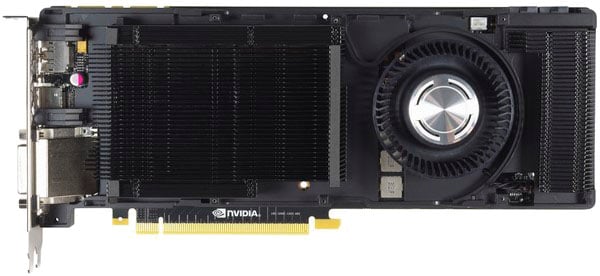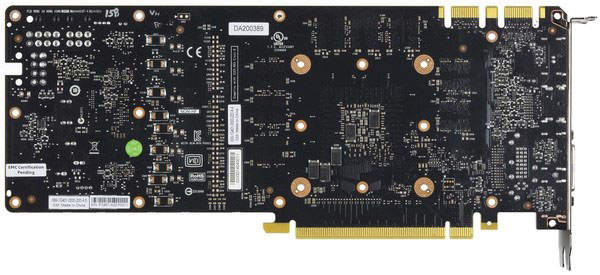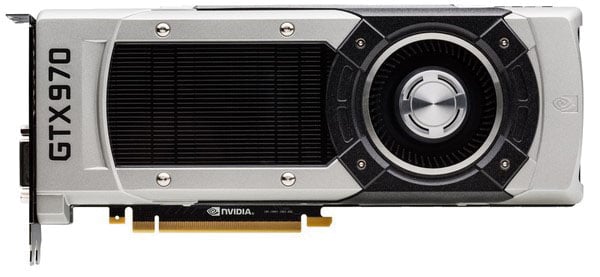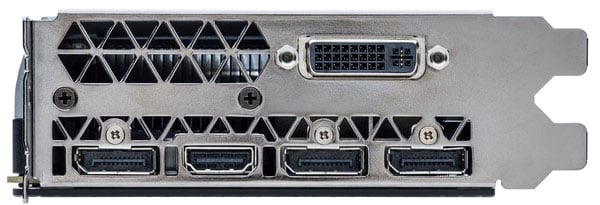NVIDIA GeForce GTX 980 & 970 Maxwell GPU Reviews
Introduction and Specifications
A few months back, we took a look at the GeForce GTX 750 and GTX 750 Ti, which features a GPU based on NVIDIA’s bleeding-edge Maxwell microarchitecture. Although there have been a few exceptions, when one of the big GPU makers releases a next-gen GPU, they typically start at the high-end and then scale the GPU back to flesh out a top-to-bottom line-up of products, at various price points, leveraging the same core chip architecture. That wasn’t the case with NVIDIA's Maxwell, however.
With Maxwell, NVIDIA took a somewhat different approach. The GeForce GTX 750 and GTX 750 Ti are low-power graphics cards targeting mainstream PC users; higher-end GPUs in NVIDIA’s product stack remained based on the previous-gen Kepler microarchitecture. But that changes today, as the two new products we’ll be showing you here—the GeForce GTX 980 and GTX 970—are based on Maxwell and replace NVIDIA’s current high-end offerings, the GeForce GTX 780 Ti, GTX 780, and GTX 770.
When you see the GeForce GTX 980 and GTX 970’s specifications, you may scratch your head a bit and wonder how products with seemingly lower-end specs can replace powerhouses like the GTX 780 Ti and GTX 780, but rest assured they do. NVIDIA’s got a few tricks up their sleeve this time around and the end results are a couple of high-performance, highly-efficient graphics card that will be right at home in the fastest of systems.

Feast Your Eyes On The GeForce GTX 980
|
| GeForce GTX 980 | GeForce GTX 970 | |
| Graphics Processing Clusters | 4 | |
| Streaming Multiprocessors | 16 | 13 |
| CUDA Cores (single precision) | 2048 | 1664 |
| CUDA Cores (double precision) | N/A | |
| Texture Units | 128 | 104 |
| ROP Units | 64 | |
| Base Clock | 1126 MHz | 1050 MHz |
| Boost Clock | 1216 MHz | 1178 MHz |
| Memory Clock (Data rate) | 7000 MHz | |
| L2 Cache Size | 2048K | |
| Total Video Memory | 4096 MB GDDR5 | |
| Memory Interface | 256-bit | |
| Total Memory Bandwidth | 224 GB/s | |
| Texture Filtering Rate (Bilinear) | 144.1 GigaTexels/sec | 109.2 GigaTexels/sec |
| Fabrication Process | 28 nm | |
| Transistor Count | 5.2 Billion | |
| Connectors |
1 x Dual-Link DVI |
|
| Form Factor | Dual Slot | |
| Power Connectors | Two 6-pin | |
| Recommended Power Supply | 500 Watts | |
| Thermal Design Power (TDP) | 165 Watts 145 Watts | |
| Thermal Threshold | 95°C | |
| Price | $549 MSRP: Find on Amazon when available |
$329 MSRP: Find on Amazon when available |
The NVIDIA GeForce GTX 980 and GTX 970 are somewhat similar. The cards share the same 4GB frame buffer and GM204 GPU, but the GTX 970’s GPU is clocked a bit lower and features fewer active SMs and CUDA cores. The GeForce GTX 980’s GM204 GPU has all of its functional blocks enabled and is the full implementation of the chip.
The fully-loaded GeForce GTX 980 GM204 GPU has a base clock of 1126MHz and a Boost clock of 1216MHz. The GTX 970 clocks in with a base clock of 1050MHz and Boost clock of 1178MHz. As we’ve mentioned, a few of the blocks in the GPU have been disabled in the GTX 970, and as such, it sports fewer cores and texture units. Whereas the GeForce GTX 980 is packing 2048 CUDA cores, the GTX 970 has 1664. The GTX 980 also has 128 texture units to the 970’s 104.
The 4GB of video memory on both cards is clocked at a blisteringly-fast 7GHz (effective GDDR5 data rate) and the memory links to the GPU via a wide 256-bit interface. At those clocks, the GeForce GTX 980 offers up a peak textured fillrate of 144.1 GTexels/s and 224 GB/s of memory bandwidth; the GTX 970 offers a peak textured fillrate of 109.2 GTexels/s and the same amount of memory bandwidth. Those numbers might seem low in light of the GeForce GTX 780 Ti’s 384-bit memory interface, 210 GTexels/s and 336 GB/s of memory bandwidth, but stick with us here—we’ll have more to share on the next couple of pages.
Like the high-end cards in the GeForce GTX 700 series, the new GeForce GTX 980 and GTX 970 reference cards are outfitted with heavy-duty coolers and frames made of aluminum to add rigidity. The GTX 980 also has an aluminum back-plate, which aids in cooling. And what’s interesting about it is that there’s a removable panel that allows for better air-flow between cards, should a system be packing multiple cards, close together. NVIDIA claims they’ve done some testing in this regard, and removing that portion of the back-plate is all that’s necessary to improve air-flow into an adjacent card’s fan. The GeForce logo along the top edge of the cards also light up and there are embossed badges at the front of the fan shroud with the cards’ model number. For the most part, the GeForce GTX 980 and 970 reference cards, look very much like the 700 series.
The actual cooling hardware on the cards consists of a large vapor chamber with a densely packed, nickel-plated aluminum finstack, and a large, rear-mounted barrel-type fan with user-adjustable fan curves. Like NVIDIA’s previous-gen flagships, these new cards also use low-profile components on about the front 65% of the PCB around the GPU. The card’s cooler has a flat, ducted baseplate for unobstructed airflow, which minimizes turbulence and helps quiet down and better cool the card.
There is a window cut into the fan shroud that shows off the finstack (under a sheet of Lexan), and due to the fan configuration, virtually all of the heat produced by the card is exhausted from a system. Cards with centrally mounted axial-type fans, expel some of the heated air from the system, but dump the rest back into the case.
As evidenced by the pair of SLI edge connectors at the top of the card, the GeForce GTX 980 (and 970) supports up to 3-Way SLI, and because the TDP of the card is only 165 watts, dual 6-pin supplemental PCI Express power feeds are all that are required to power the cards. We should note, that like the 780 Ti, the GTX 980 and GTX 970 have a power balancing feature that allows the card to direct power from whichever feeds have headroom, when under load. The card receives power from three sources—the two supplemental PCIe feeds and the PCIe slot itself. Should one become overloaded when overclocking, for example, power can be utilized from one of the other feeds, if it’s available.
Outputs on the reference cards consist of a pair of a single dual-link DVI output, three full-sized DisplayPort outputs, and an HDMI connector—four of which can be utilized at any given time. The GeForce GTX 980 and GTX 970 have more than enough muscle to push multiple displays simultaneously, and as such, they support NVIDIA's 3D Vision Surround technology. Like the older members of the GeForce GTX 700 series, the GTX 980 and 970 are ready for NVIDIA’s G-Sync technology as well.














